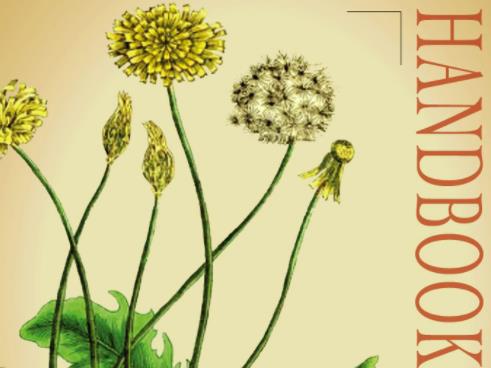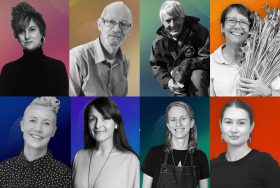Book cover image: The Weed Forager’s Handbook: A Guide to Edible and Medicinal Weeds in Australia by Adam Grubb and Annie Raser-Rowland.
This handbook refers to the ‘science textbook’ definition of a weed as ‘a plant that according to some human criteria is undesirable’. The joint authors, Adam Grubb and Annie Raser-Rowland, then proceed to do their best to convince the reader of the desirability of their top 20 edible and medicinal weeds, making it hard to understand why they were, and still are, considered undesirable by so many of us. Perhaps it is because for most of us a weed is ‘a wild plant growing where it is not wanted and [is] in competition with cultivated plants.’ Anyone who has had to clear blackberry bushes from an overgrown and neglected back yard will agree.
In addition to blackberry, the list of weeds includes a few old favourites such as dandelion, fennel and nasturtium and some surprises, including cleavers, better known as goosegrass, and sow thistle.
There are excellent illustrations of all the plants described so those not expert in the field would be unlikely to make a dangerous mistake. Even so, collecting edible weeds is not for the fainthearted and requires caution as well as common sense. The authors warn against harvesting weeds from areas that could have been contaminated. They also remind the reader that it is important to note that some weeds are poisonous, such as the castor oil plant where an adult lethal dose is as little as four chewed seeds. The poisonous weed, hemlock, which was used to kill Socrates, also gets a mention. Apparently hemlock can be confused with parsley, fennel or wild celery.
In the chapter titled Other Weeds, the authors described some of the weeds that are more difficult to recognise and in some cases harder to use. Some of these weeds have useful medicinal purposes but should not be ingested.
The authors obviously enjoy foraging for weeds and in the free companion website to the book, www.eatthatweed.com, they encourage you to join edible-weed walks and workshops. The recipes in chapter four demonstrate some of the tasty dishes that can be made using the weeds described in the book.
In the introduction, Costa Georgiadis, well known and respected as the heavily bearded host of ABC’s Gardening Australia, asserts that the endless possibilities of plants ‘formerly known as weeds’ should be of interest to everyone. He writes, ‘if you eat, then this book is an essential companion’. This may be a slight overstatement, but The Weed Forager’s Handbookwould make a very worthy addition to anyone’s library of reference books.
Rating: 4 stars out of 5
The Weed Forager’s Handbook
A Guide to Edible and Medicinal Weeds in Australia
by Adam Grubb and Annie Raser-Rowland
ISBN: 9781864471212
Category: Botany & plant sciences
Format: Paperback / softback
Publication Date: 01-10-2012 Republished: 2017
Publisher: Hyland House Publishing Pty Ltd
Country of origin: Australia
Pages: 166





